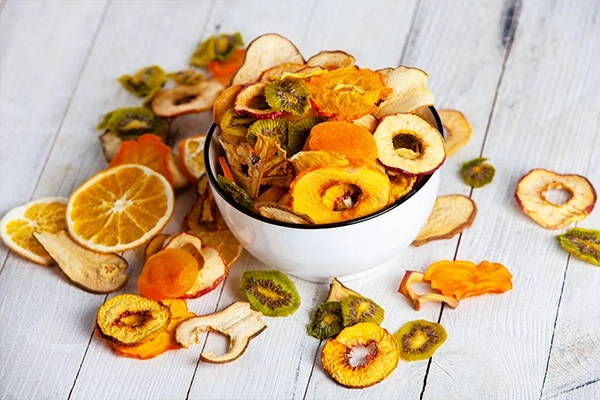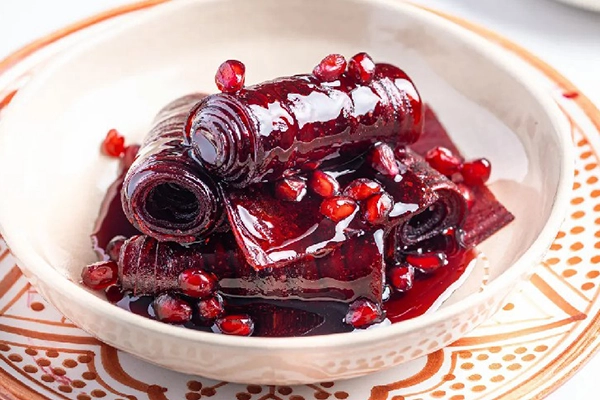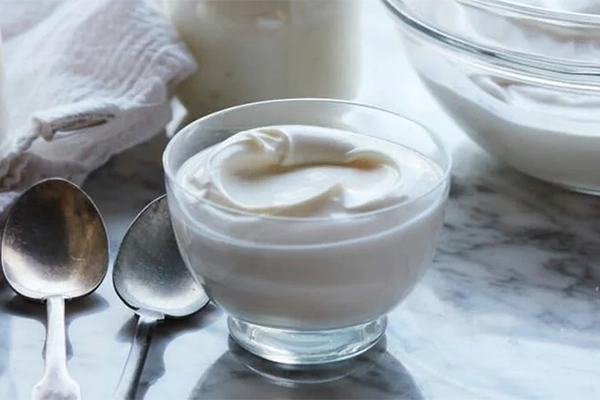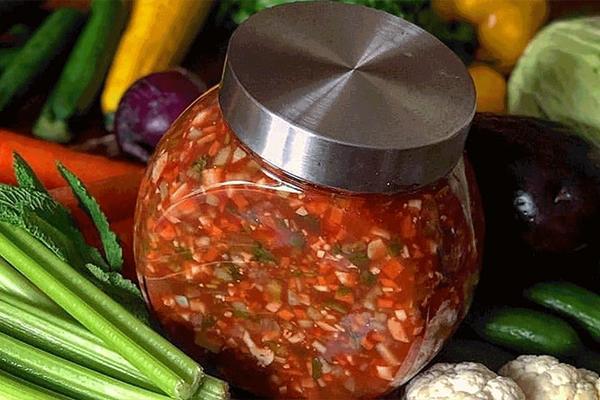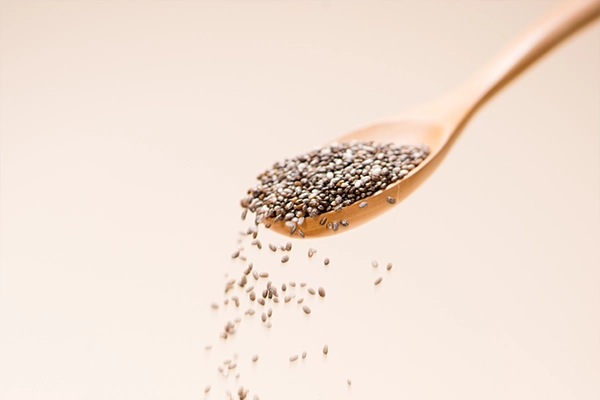Dry fruit at home is a great way to preserve the flavor and nutrients of seasonal fruits. By following a few simple tips, you can make delicious and healthy dried fruit at home:
1. Fruit selection
For drying fruit, ripe but firm fruits are the best choice. Fruits such as apples, apricots, grapes, plums, and strawberries are great choices. Avoid blemished or moldy fruit as these problems are exacerbated during the drying process.
2. Washing and preparation
Wash the fruits with cold water and dry with a clean towel. Then remove the skin and core and cut into equal pieces. Thinner slices will dry faster, but be careful not to make them too thin to break.
3. Preparation
To prevent discoloration of fruits such as apples, pears, and apricots, soak them in a solution of one tablespoon of lemon juice and one liter of water for 5 minutes. This will prevent the fruit from browning.

4. Method selection
– Drying in the sun: it is a natural and inexpensive method, but it is time-consuming and requires the right weather.
– Using an oven: it is a faster method, but it consumes a lot of energy.
– Fruit dryer: it gives the best and most uniform result, but it requires the purchase of a device.
5. Suitable temperature and time
For most fruits, a temperature between 50 and 60 degrees Celsius is suitable. The drying time varies depending on the type of fruit and the size of the slices and can take from 6 to 36 hours.
6. Rotation and regular review
Every 2-3 hours, rotate the fruit trays and check the condition of the fruits. Separate dried fruit to prevent over-drying.
7. Correct storage
Allow dried fruit to cool completely before storing. Then put them in airtight glass or plastic containers and store them in a cool and dark place. Check containers every two weeks to ensure freshness. By following these tips, you can prepare high quality dried fruit at home. Do you have any other questions about the fruit drying process?
Dry fruit at home methods
1. Using the oven
– Prepare and cut the fruits.
– Set the oven to the lowest temperature (usually around 65 degrees Celsius).
– Place the fruits on the oven tray and leave the door slightly open to let the moisture escape.
– Check and rotate the fruits every few hours.
– This method dry dehydrate fruit usually takes 6 to 12 hours.
2. Drying in the sun
– Place the cut fruits on the mesh tray.
– Place the tray in direct sunlight and cover it with a fine net to protect it from insects.
– Bring the tray inside at night.
– This dry fruit method may take several days.
3. Using a fruit dryer
– Set the dryer according to the instructions.
– Arrange the cut fruits on the trays of the machine.
– Set the temperature usually between 50 and 60 degrees Celsius.
– This drying method usually takes 8 to 36 hours, depending on the type of fruit.
4. Using the microwave (for small amounts)
– Place the cut fruits on a microwave-safe plate.
– With low power, dry fruits for 30 seconds each time.
– Check and rotate the fruits between each stage.
– This method is quick but not suitable for dry fruit at home in large quantities.
Each of these methods dry dehydrate fruit has advantages and disadvantages. The choice of method depends on the available facilities, amount of fruit and available time. The most important point in dried fruit is patience and precision in the drying process to obtain a quality product. Faraz offers a wide variety of fruits, so you can prepare different types of dry fruit at home. So, to start your dry fruit journey, your first destination should be Faraz Hypermarket. With fresh and high quality Faraz fruits, start the fruit drying process with confidence and enjoy the result!
Benefits of preparing dry fruit at home
1. Quality control: When you dry dehydrate fruit yourself, you are sure of the quality and health of the raw materials.
2. No Additives: dry fruit at home is usually free of preservatives and added sugar, unlike commercial ones.
3. Economic efficiency: preparing dry fruit at home can be more economical in the long run than buying ready samples.
4. Reduce waste: Drying is a great way to use up excess fruit and prevent it from spoiling.
5. Retention of nutritional value: The process of dry fruit at home, if done correctly, preserves many vitamins and minerals.

6. Better taste: Homemade dried fruit usually has a more natural and better taste than commercial samples.
7. Variety: You can dry different types of fruits and even create your own blends.
8. Long-term storage: drying allows for long-term storage of fruits.
9. Healthy snack: Dry fruit at home can be a healthy alternative to unhealthy snacks.
10. Cooking pleasure: The process of preparing dry fruit at home can be an enjoyable and educational activity.
11. Size and shape control: You can cut the fruits to the desired size and shape.
12. Unique gift: Homemade dry dehydrate fruit can be a special and personal gift for friends and family.
With these benefits in mind, drying fruit at home can be a valuable and useful activity. Not only will you benefit from a healthy and delicious end product, but you will also develop your cooking skills.
Conclusion
Dry fruit at home is a great way to preserve the flavor and nutritional value of seasonal fruits. By following the tips and tricks mentioned in this article, you can successfully dry the fruit. Choosing the right and fresh fruits, correct preparation, using the right drying method and correct storage, all have an impact on the final quality of the product. Whether you use a home oven, natural sunlight or a fruit drying machine, you can prepare delicious and healthy dried fruit with patience and care. Remember that dried fruit is not only a great way to store seasonal fruit, but can also be used as a healthy snack or delicious addition to a variety of meals. With practice and experience, your drying skills will increase and you will be able to enjoy the taste and benefits of homemade dried fruits throughout the year. This process not only allows you to enjoy your favorite fruits in different seasons, but it can also help reduce food waste. So start with confidence and enjoy the delightful results of dried fruit.
